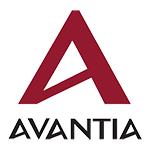Your data has answers, let’s unlock them
Every click, scroll, and interaction tells a story. With today’s powerful (and often free) digital tools, you don’t have to rely on guesswork. You can use data to build a smarter, faster, and more effective online presence.
By combining Google Analytics 4 with Google Tag Manager, virtually everything in your digital ecosystem becomes measurable. These insights reveal how users engage with your site, what drives conversions, and where opportunities for improvement lie.
We help you:
- Define what success looks like for your business
- Set up tracking to monitor your most important KPIs
- Continuously optimize your site for performance and user experience
Analytics isn’t just about reporting, it’s the foundation for smarter decisions, better user journeys, and measurable results.
From insights to impact.
With constant changes and enhancements to the Google Marketing Suite set of tools, our clients come to us for answers.
"Where can we see if our site is getting traffic from AI agents?"
In GA4 you will see traffic coming from LLMs in the acquisition reports out of the box, but you will need to dig a bit. Navigate to Traffic Acquisition or User Acquisition reports and change the dimension from Session Primary Channel Group to Session Source/Medium. The various LLMs driving traffic will should as the source and the medium will likely be "not set". So, for a referral from ChatGPT the source will read as chatgpt.com and the medium is "not set."
"How can we be sure the website data we look at is accurate?"
This is a common concern clients come to us with. We begin with an analysis of the data being generated and how it is being collected. If you are using Google Tag Manager, there are a number of tools to watch events tracking in real time and debugging that way. By taking the time to carefully review your data capture, we can ensure that the data you rely on is accurate.
"How do we use analytics to optimize our website?"
If your website visitors are not converting or engaging to the extent you had hoped, the numbers will tell the story. Where are they getting stuck? Are there areas of the site where they spend more time than others; or where they spend almost no time. Optimizing often means meeting the user where they are, not trying to change their overall behavior.

Let's Partner
Avantia will create, and implement, digital marketing strategies that will make you and your company look like rock stars - and have the data to back it all up.

